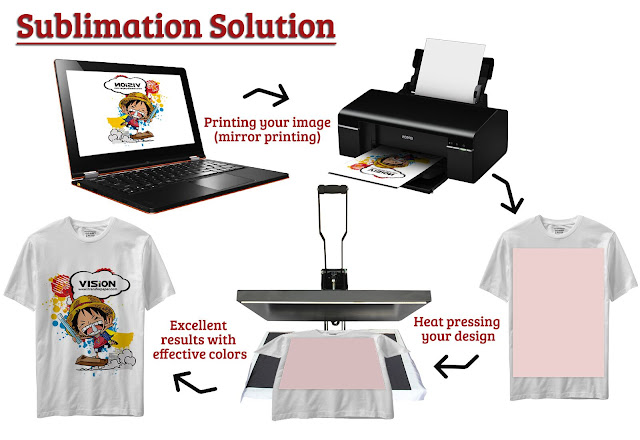dye-sublimation printer comparison with inkjet printers
Traditionally, the advantage of dye-sublimation printing has been the fact that it is a continuous-tone technology, where each dot can be any color. In contrast, inkjet printers can vary the location and size of ink droplets, a process called dithering, but each drop of ink is limited to the colors of the inks installed. Consequently, a dye-sublimation printer produces true continuous tones appearing much like a chemical photograph. An inkjet print is composed of droplets of ink layered and scattered to simulate continuous tones, but under magnification the individual droplets can be seen. In the early days of inkjet printing, the large droplets and low resolution made inkjet prints significantly inferior to dye-sublimation, but some of today's inkjets produce extremely high quality prints using microscopic droplets and supplementary ink colors, producing superior color fidelity to dye-sublimation.
Process
An inkjet prints by spraying microscopic droplets of liquid ink from the nozzles in the cartridge. As a mechanism moves the cartridge back and forth across the page, the droplets hit the paper, dry and form tiny dots of black, cyan, magenta and yellow color. The printer produces a wide array of colors by precisely controlling where the dots land. A dye sublimation printer works by heating a special ribbon containing solid inks. The ink sublimates, or become a gas without liquefying first. The process lays down varying amounts of three primary colors plus a clear coating onto the paper. The gas solidifies on the page, resulting in full-color images. The clear coat protects the ink from smudging.
Color Quality
Dye sublimation printers produce images with a continuous range of colors, as a traditional chemical photograph does. The inkjet printer uses primary color dots in similar fashion to a computer monitor; if you magnify the image, you can see the primary colors, whereas the colors physically blend with dye sublimation. However, the best examples of each technology both output good-looking results, and choice comes down to personal preference and factors other than image quality.
Efficiency
An inkjet printer uses only as much ink as needed to produce an image or a printed page; ink remaining from one print batch will be used on subsequent ones. The dye sublimation process is less efficient in terms of ink: the printer transfers only a portion of each of the ribbon's three primary color panels to the page. Some ink inevitably remains on the panel and cannot be reused.
Media
Dye sublimation printers require specially coated paper, cards or other media. In addition to postcards and photo prints, dye sublimation printers turn out novelty items such as printed T-shirts and coffee mugs. Inkjet printers work with copier paper, envelopes, labels and other standard office media. Inkjets also take specialty paper with matte or glossy finishes for photo printing.
Dye sublimation offers some advantages over inkjet printing. For one, the prints are dry and ready to handle as soon as they exit the printer. Since the thermal head doesn't have to sweep back and forth over the print media, there are fewer moving parts that can break down. The whole printing cycle is extremely clean as there are no liquid inks to clean up. These factors make dye-sublimation generally a more reliable technology over inkjet printing.
Dye-sublimation printers have some drawbacks compared to inkjet printers. Each of the colored panels of the ribbons, and the thermal head itself, must match the size of the media that is being printed on. Furthermore, only specially coated paper or specific plastics can accept the sublimated ink. This means that dye-sublimation printers cannot match the flexibility of inkjet printers in printing on a wide range of media.The dyes diffuse a small amount before being absorbed by the paper. Consequently, prints are not razor-sharp. For photographs, this produces very natural prints, but for other uses (such as graphic design) this slight blurriness is a disadvantage.
We are top professional Sublimation Transfer Paper Manufacture in China.We Produce 45gsm - 100gsm , any size we can offer, accept OEM.
web:www.itransferpaper.com
Email :vision@itransferpaper.com



评论
发表评论
see more on our web www.itransferpaper.com